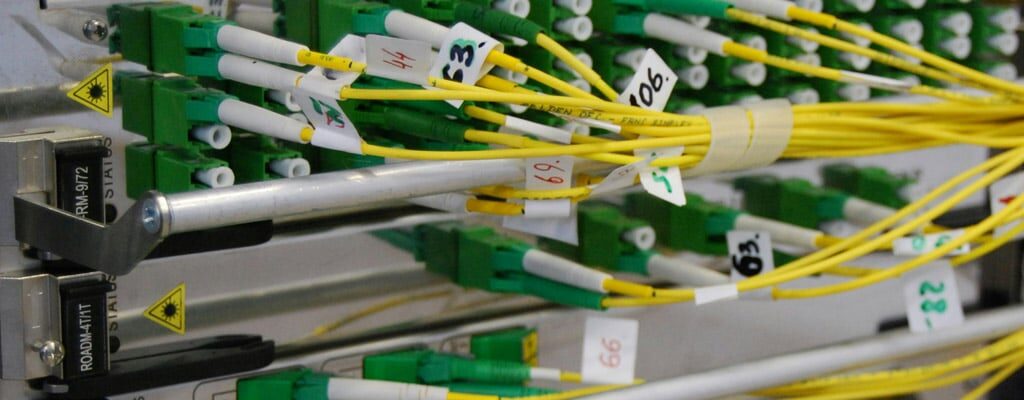When to Perform a Network Infrastructure Upgrade
Contents
Most businesses run on what is now legacy equipment. Technological advancements continue relentlessly, and few organizations can afford to update their systems constantly. However, when considering a network infrastructure upgrade for your business, there are a few things to keep in mind.
Entrepreneurs and established business executives are understandably reluctant to change what works. When new technologies offer more streamlined or cost-effective means of achieving business objectives, executives need to balance those gains against a broad range of infrastructural challenges.
These challenges include user acceptance, workflow follow-through, undiscovered dependencies, and avoiding downtime. These obstacles make it necessary for IT professionals to see a clear need to upgrade before beginning the process.
When to Upgrade Network Infrastructure
Despite the risks and challenges that upgrading network infrastructure entails, there are plenty of clear-cut cases when it is necessary. When conditions dictate that upgrading network equipment or switching to a new provider will generate sufficient value to overcome the potential risks, it becomes a valuable asset to be capitalized upon.
Very few organizations will upgrade IT infrastructure simply in order to remain up-to-date with the latest technology on the market. The vast majority will only begin drafting their network infrastructure upgrade project plan in response to cyber extortion or another prompt.
Here are few of the main reasons companies will upgrade their network infrastructure:
Rapid or Unexpected Growth
Expansion is great for business, but it can come with growing pains. While revenues surge, overhead and administrative complexity increases. Growing organizations need to hire more employees, purchase more software licenses, and invest in training. All of these things strain technological infrastructure, leading to increased costs.
When growth doesn’t come along with a low cash conversion cycle, infrastructural strain can be challenging to accommodate. These organizations need to find a scalable managed solution that can respond to their needs efficiently.
High Employee Turnover
Retaining top employees is challenging enough in today’s job market. Retaining top employees and convincing them to use less than ideal equipment is nearly impossible. Star performers will typically go to the companies that are able to utilize their talents to the greatest degree – which almost always means the ones with the best technical infrastructure.
While upgrading IT infrastructure won’t necessarily keep top employees working their positions on its own, it definitely plays an important role. Technological flexibility comes in a range of flavors, such as mobile compatibility, that many top employees will consider deal-breakers if not adopted.
Missed Sales Opportunities
Missed sales opportunities are one of the surest signs of failing infrastructure. Think of the number of direct, quantifiable losses the company suffers due to technology failure – missed calls, mis-delivered quotes, lost VoIP connections, or poor mobile compatibility. If this is you, consider getting ahold of one of our VoIP consulting experts.
In today’s tech-oriented environment, neither employees nor customers tolerate technological failings. They expect technology to serve their needs intuitively and competently. If your technology falls short, upgrading your network infrastructure may be the best way to stay competitive.
Increasingly Mobile Employees
Mobile compatibility is a serious enough issue that it warrants its own category among reasons to upgrade network infrastructure. In every industry, increasing numbers of employees are working remotely – some from home, some from abroad, and others while traveling.
Without a comprehensive enterprise mobility management solution, managing mobile employees effectively is impossible beyond an ad-hoc basis. Upgrading network infrastructure offers a crucial benefit: accommodating mobile employees, vendors, and customers through a unified IT framework.
Upgrading Network Infrastructure Capabilities
If an organization’s strategic objectives exceed the capabilities of its current system, executives have several options. The easiest solution is to “bolt on” new applications or capabilities to the existing infrastructure and hope everything runs smoothly. However, this approach only works so many times before the underlying system becomes overwhelmed.
There will come a time when long-term business objectives outpace the capabilities of the current system. When that happens, it falls on the IT team to draft solutions for upgrading infrastructure in a way that supports business objectives before the organization needs that infrastructure in place.
Network Infrastructure Upgrade Experts
Organizations that wish to upgrade IT infrastructure on their own quickly run into expensive and risky obstacles. The potential fallout that arises from network mismanagement can quickly eclipse any potential gains to be made.
This is why small businesses and enterprises alike are increasingly turning to high quality managed network services they can trust. With a reputable vendor providing network infrastructure as a service, you can access the latest and most secure equipment without sacrificing cash flow or liquidity.
Is it time for your organization to start capitalizing on the latest IT infrastructure the tech industry has to offer? Speak with one of our managed network specialists to learn more.



